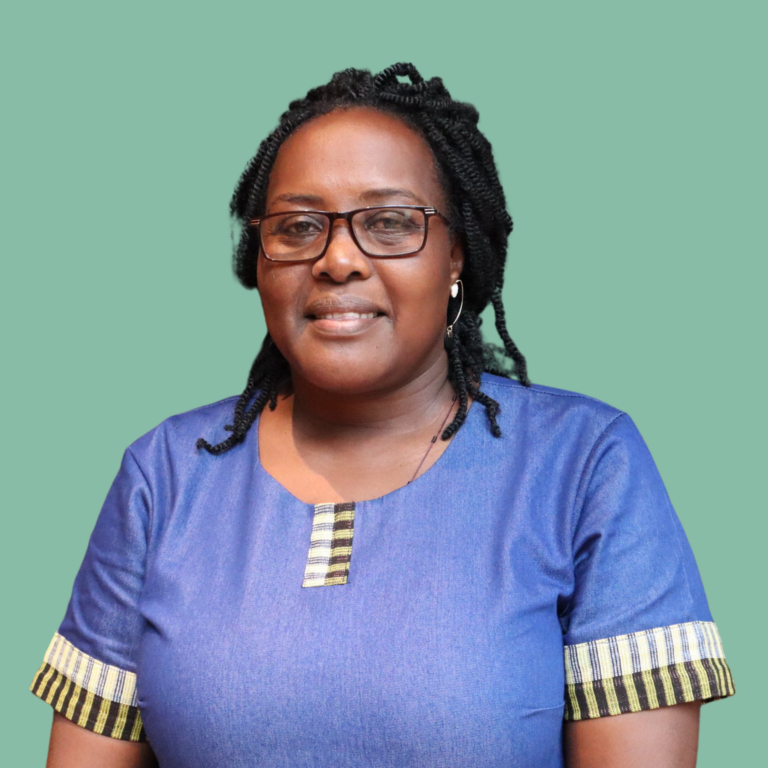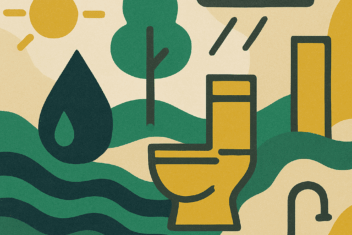Sustainability & partnerships: Pamela Kabasinguzi (Caritas Fort Portal-HEWASA) interview

Diving back in history
WASTE and its partners around the world have been changing the development game for nearly 4 decades. We have together developed sustainable and inclusive solutions to many challenges in the waste management and sanitation sectors. Approaching the organisation’s 40th anniversary, we wanted to revisit some key players from our history of collaborations to learn lessons on how we can maintain the spirit of our founders and early work as we move forward.
The following traces WASTE’s history through three continents and many decades, sharing the stories of 7 pivotal individuals who have contributed to this spirit through our work together. These individuals and organisations have continued to share our spirit of inclusivity in everything they do.
A few key takeaways
- Through our holistic approaches, WASTE and its partners around the world have been working on the underlying concepts of ‘circularity’ for decades. It is only recently that high level discussions have rebranded and called more attention to the importance of what is called today “circular economy”. Circularity is integrated in our approach.
- Working with the informal sector is difficult but a critical component to sustainable waste management systems. All our partners echo that this aspect of the work as pivotal to the inclusion and innovative nature of their work.
- Institutionalisation of key concepts and approaches in policy, whether on local or national scales, are crucial for ensuring sustainability of our work.
- Buy-in from the communities, especially local leaders, can either catalyse the success of or be the sole reason for failure of interventions. We must ensure our programmes and solutions are co-created with and by the communities we are trying to serve.
- Real change and local ownership take time to have sustained impact. Our projects, ambitions, and relationships with key stakeholders, shouldn’t forget this key consideration.
Gamechanger 2: Pamela Kabasinguzi
Executive Programme Manager, Caritas Fort Portal-HEWASA
Fort Portal, Uganda
“With WASTE, we have ventured in into an area where there were no people and there was high risk. Together, Caritas Fort Portal-HEWASA has developed expertise in a niche that adds value to the work, making us different and capable to partner with other organizations…While others talk of households as beneficiaries, we talk of the households as clients who are able to buy a product and make decisions for themselves.“
Caritas Fort Portal-HEWASA is the social services arm of the Catholic Diocese of Fort Portal. It was established in 1980 as an emergency and charity organization to support people affected by the civil unrest at the time. In 1993, the organization expanded to include water, sanitation and hygiene (WASH), justice and peace, agriculture development services (ADP), and financial services.
1. Can you describe the thematic focus of your organisation?
Caritas works a lot on water, sanitation, hygiene (WASH) and health, along with a focus on agriculture, microfinance, and livelihood programmes which are based in the refugee camps along with gender issues. We work on water for drinking and for crop and animal production.
We have done a lot of pipe water systems in the western region of Uganda, contributing to the construction of over 50% of the water systems [there]. Caritas has also been the main regional coordinator for all of the NGOs working in the western region on WASH. We have been working to build capacity of several other organizations. We have also had several development partners to support this work, including UNICEF (United Nations Children’s Fund), WaterAid Uganda, German GIZ (Gesellschaft fuer Internationale Zusammenarbeit) and many others.
2. When did you start working with WASTE?
Our first programme with WASTE was in 2011, where we were coordinating partners in the WASH Alliance. Together, we focused on sanitation and looking at public places like commercial buildings and markets and introducing financing for WASH. WASTE’s Diamond approach was introduced as a multi-stakeholder way of developing the local sanitation market and businesses.
We started with WASTE’s Diamond approach by training local stakeholders and introduced it to financial institutions such as HOFOKAM, which is an institution formed by the Catholic Church and has 3 dioceses within it, forming a microfinance body. Since at that time there were very few institutions interested in working with and giving loans for sanitation, we worked with HOFOKAM to introduce how a sanitation loan product would work and be interesting for them. Given the relatively new nature of the loan, we set up a Guarantee Fund to support the early initiative. WASTE helped us in capacity building of the staff in financing, product development, business identification across the value chain in sanitation, marketing skills, business skills, how to market the product in terms of sanitation technology options, and how to approach the clients.
Now under the new FINISH (Financial Inclusion Improves Sanitation & Health) Mondial programme that we are working on with WASTE and other international and national partners, we see that we have picked up exactly on where the WASH Alliance had stopped. Since there was already some work done in the region where we are based, there was some awareness amongst people about sanitation and businesses that were working on this. Caritas is now leading on the local financing, business development, (what we call the supply side of the Diamond approach). We have thus been building a system where there is some sustainability.
So, with WASTE, we ventured in into an area where there were no people and there was high risk. Where people were saying “How can you expect an average household to afford a permanent sanitation system, given their low incomes?” But we have been able to produce results and develop the local market, due to our partnership with WASTE, to work on this risky issue, where most NGOs would not go. Together, Caritas has developed expertise in a niche that adds value to the work, making us different and capable to partner with other organizations.
3. How do you integrate WASTE’s Diamond Model in your work on the ground?
It can be difficult to explain how the Diamond approach is different. We must take time to explain how we work with the government, households, financial institutions and entrepreneurs together. Most NGOs give subsidies or reduce interest, but that does not help address the problem fully. Instead, what we do differently is focus on high demand creation and emphasize the financing part of the Diamond. We approach the financing part from the angle of business, financial literacy, and market creation. While others talk of households as beneficiaries, we talk of the households as clients who are able to buy a product and make decisions for themselves.
What is unique with the Diamond, is that the four stakeholders are brought together and function in a linked manner. All corners must be developed together.
4. Can you share any challenges met with the Diamond and how you overcame them?
Some challenges arise with financial inclusion and leaving some poor households behind. For situations like child-headed households, we look at merry-go-round and other group formation schemes. These take time, but it works for people who cannot afford to build a toilet on their own. Another challenge is that some people have already constructed basic toilets, and we come in with improved technologies, but these people have already spent money. In such situations, we support in improving what is existing, by making sure that they have more sustainable toilets, for example, with washable floors.
Another issue is that once a leader of a community thinks that they cannot afford, then if becomes a major challenge. We try to work in areas where the leaders are positive and want to work with us. Finally, another challenge was for the bank itself—a financial institution could not have it in mind that people would want a loan to construct a toilet. It takes a lot of time to develop the whole system properly.
5. Was the model scalable?
When we are looking at scalability, I consider scale at different angles. One is scaling with the number of systems (toilets) built. Another is scaling the approach, so when we work with other organizations, such as community-based organisations (CBOs), we train them in the approach to take up the roles of supply and demand. Another way of scaling is through changing the way we finance projects, for example through result-based financing
6. Did the models adopted require any fundamental changes later?
The areas where the model has not worked well is where there is no assured income in the community. Where it worked successfully has been regions where there are for example, banana plantations, and people have some form of income. To me, in the first years of using the Diamond approach, we did a lot on demand creation and government engagement, but the business and institution part of it was not very well emphasised. While demand creation is good, what makes the sustainability and scale is the other two pillars of financing and business development.
7. Can you share why others should work with faith-based organisations like Caritas?
What is unique is that Caritas is a religious organisation. It has unique approaches and looks at the holistic person. It looks at charity of course, but it works to develop a person in all spheres. When we are doing demand creation, we use the platform of the Church because people believe in their leaders, they believe in their priests, their sheikhs, and in what they do. Even the Pope talks about the environment and the dignity of man while referring to the Bible and the quotation where every household is asked to be kept clean that, “When the God comes to bless you, the house should be clean”. Even the Quran and other religions have similar kinds of scriptures. We are working with other religious institutions. Research has also shown that religious institutions can activate people to work beyond what other mediums would push them to do. We, at Caritas, are using a similar approach to encourage people towards quality-of-life improvements like safe sanitation.


